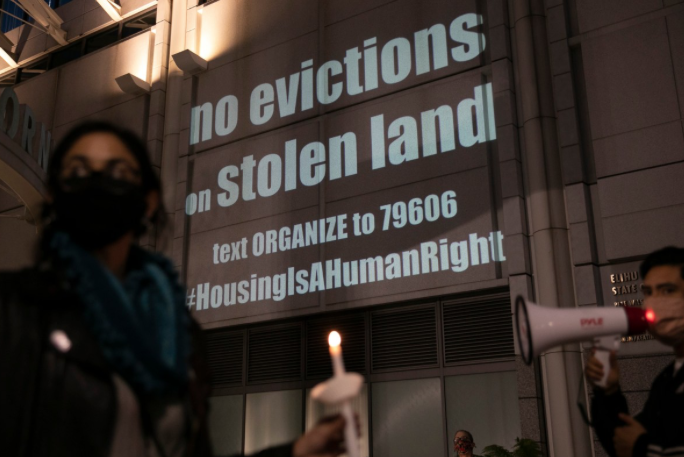CommentsHOUSING - California’s eviction protections will almost certainly not be extended once they expire after Sept. 30, the state Assembly Housing chairperson said today.
The legislative session ends Friday, so that’s the last day that lawmakers could push off that deadline. But the political appetite just isn’t there to act, according to David Chiu, a San Francisco Democrat who spearheaded the previous efforts to stall the displacement of tenants amid the pandemic.
“I believed our eviction protections for tenants should be extended beyond September 30. The delta variant and the end of many unemployment benefitsmake that even more urgent,” Chiu told CalMatters. “Unfortunately, some of my colleagues feel differently, and there’s not enough consensus for that.”
The current round of eviction protections were extended on June 25, just days before they were set to expire. At that point, Assembly Speaker Anthony Rendon said he hoped the economy would be in full swing so that another moratorium would not be necessary. Rendon’s office declined to comment on the absence of another extension.
“The Legislature has kind of set a trap for itself because it won’t be in session when that expires,” said Brian Augusta, legislative advocate for the California Rural Legal Assistance Foundation, who has been lobbying for stronger protections throughout the pandemic. “So, that means, what we see is what we get.”
Augusta said the governor could still call a special legislative session to extend protections before the end of the month, or issue an executive order as he did at the beginning of the pandemic to pause court proceedings relating to evictions. But he said that’s unlikely.
The governor’s office also declined to comment.
The California Rental Housing Association, which represents more than 20,000 landlords and has sued the state over the last round of protections, was pleased by the decision, but not surprised.
“Our lobbyists did not come to us and say, ‘Hey, you know, we’re going to have to compromise somewhere or anything like that,’” said Sid Lakireddy, a board member for CalRHA. “So, I think the legislators are starting to get it as well. This can’t go on at infinity.”
The eviction protections in place state that tenants will have a defense in court should their landlord evict them over non-payment of rent through Sept. 30. They still have to submit a declaration saying they are unable to make full rent, and pay at least 25% of their monthly rent since Sept. 1, 2020, in installments or in bulk, by Sept. 30.
The protections are tied to $5.2 billion in federal aid for rent relief. People making less than 80% of their area median income who were financially affected by COVID-19 can still apply for the full amount of missed rent and stave off eviction. They can also now apply for three months of forward rent.
But distribution of those dollars remains a problem. While the state has received applications for about $1.9 billion in rental aid, it has distributed only about $491 million. Still, that’s about a 500% increase since the current moratorium passed at the end of June, according to Russ Heimerich, spokesperson for the state’s Business, Consumer Services and Housing Agency.
“I think the legislators are starting to get it as well. This can’t go on at infinity.”
--SID LAKIREDDY, A BOARD MEMBER FOR THE CALIFORNIA RENTAL HOUSING ASSOCIATION
According to a recent analysis of California’s rental debt by Policy Link, an Oakland-based research group, about 753,000 families are behind on rent, and owe a cumulative $2.8 billion.
“I think everybody’s hope was that more families would have received the funds by now, and that the people who didn’t apply or were denied were a minority, as opposed to an overwhelming majority,” said Francisco Dueñas, executive director of Housing Now!, a tenant advocacy group.
Existing law has some stopgaps that, in theory, should prevent the tsunami of evictions tenant advocates and researchers have predicted. Heimerich said tenants will be shielded from an eviction procedure by the courts for 15 more days to apply for their missed rent — a provision that extends through March 2022.
To take advantage of those protections, tenants will have to show evidence they applied for the rental assistance program in court, Heimerich said. He said the state agency is working closely with the Judicial Council to inform judges of the procedure.
While the stopgap might seem promising on paper, tenant advocates are leery of its application.
“The problem with relying on the courts is it requires people to go to court,” Dueñas said. “And a lot of people don’t respond to a court notice. They just move.”
(Manuela Tobias is the housing reporter for CalMatters. Her stories focus on the political dynamics and economic and racial inequities that have contributed to the housing crisis in California and its potential solutions. This article first appeared in CalMatters.)
















